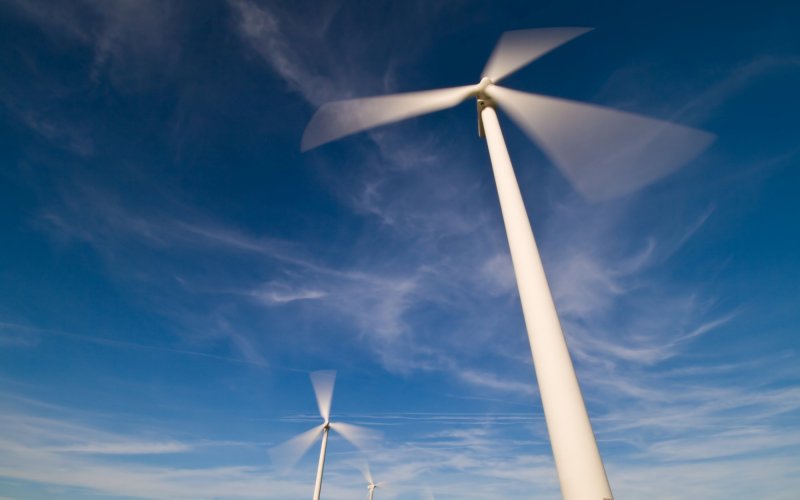The larger the wind power plant, the faster the ends of its propellers are spinning. Could it be that if the wind farm is very large and the wind is strong, the tips of its propellers will start to spin at supersonic speed? Won’t reaching that speed cause a horrible sonic boom?
Small wind turbines can reach 30 to 60 revolutions per minute, but larger ones spin more slowly at a rate of perhaps only ten revolutions per minute. What may look like slow motion from a distance is actually quite fast when you focus on the tips of the propeller blades. If we take one of the largest propellers in the world, which has a blade length of 115 metres, even at thirty revolutions per minute, it would be in danger of approaching the speed of sound, which is 343 metres per second. For this reason, large turbines spin significantly slower, so that the speed of their blades remains well below the speed of sound. In order for the generator to get enough energy from the slowly rotating turbine to produce alternating current, there is a gearbox between the propeller and the generator that increases the number of revolutions.
Even so, the ends of the propellers of really large power plants can spin at a speed of up to 100 metres per second. Because propeller blades are longer, their ends can bend more, so with the wrong combination of their bend and a sudden gust of wind, you can have a situation where air will flow around a part of the propeller at supersonic speed. In addition to the unpleasant sound effects of a supersonic explosion, there would also be a risk of damage to the blades. To avoid such a situation, the wind turbine is controlled, and in case of an approaching storm, the wind power plant is shut down — the blades of its propeller are lowered so that the wind does not turn them. This method is very gentle on the mechanism of the power plant. If necessary, the rotor can also be fixed in a fixed position using a brake. During normal operation, the rotational speed is constantly monitored and does not exceed a set limit, which is very far from supersonic speed.
Want to ask something?
Send us an e-mail with the subject “Physics mysteries” to the address:
We can't wait to tackle your interesting questions!





